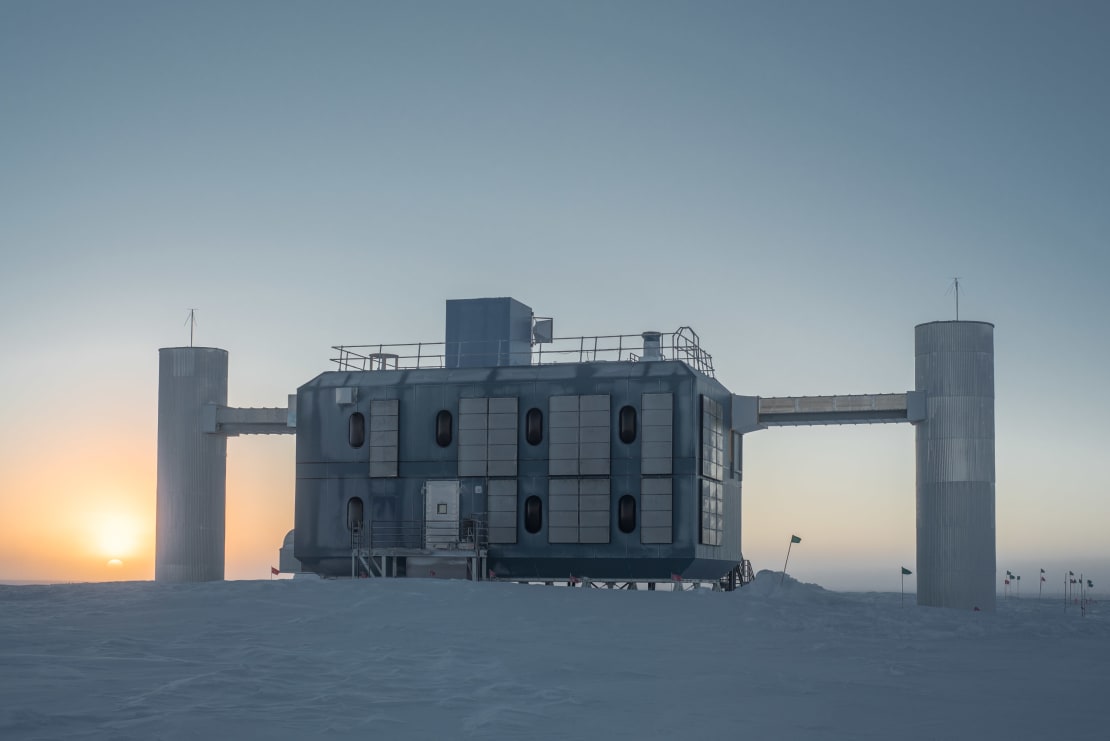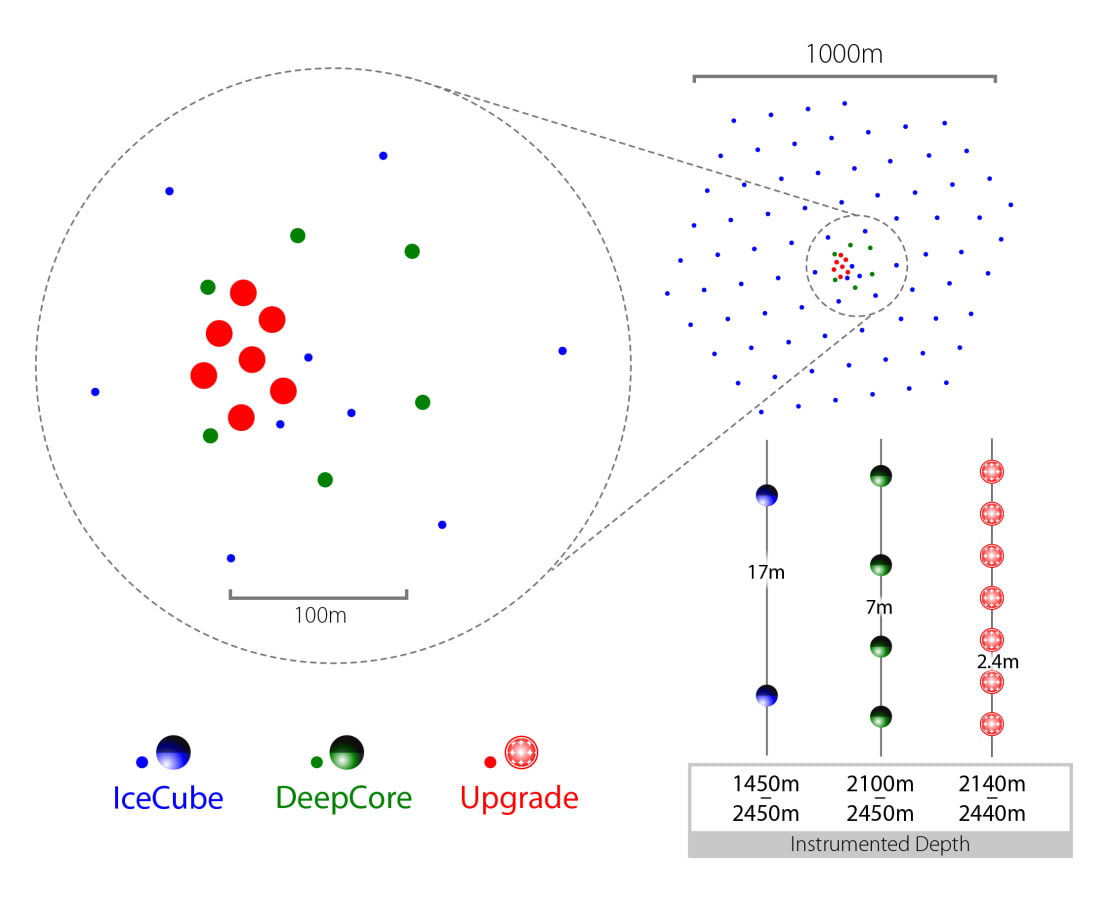That IceCube has big plans for a larger and improved neutrino detector is not a secret. This week, the launch of the so-called IceCube Upgrade—which will deploy seven new strings at the bottom of the detector array—sets a milestone in what IceCubers have designed as an incremental extension of the Antarctic detector. The IceCube Neutrino Observatory currently consists of a cubic-kilometer of pristine ice at depths between 1.5 and 2.5 kilometers near the Amundsen-Scott South Pole Station, a U.S. research facility operated by the National Science Foundation (NSF).

The IceCube Upgrade is a midscale NSF project with an estimated total award of $23M that will be managed through a cooperative agreement with the University of Wisconsin–Madison (UW–Madison)––home institution of the Wisconsin IceCube Particle Astrophysics Center, the team that led IceCube construction and currently operates the observatory. On October 1, 2018, a first increment of $1M has been released to allow IceCube headquarters to set in place the operational and management systems and prepare the final design review that will establish the baseline for the construction funding in early 2019.
UW–Madison together with Michigan State University (MSU), Penn State University, the University of Alabama, and the University of Maryland colead this project with support from the IceCube Collaboration. Further contributions of more than $3M each from funding agencies in Germany and Japan as well as MSU in the U.S. will fund the production of the new optical modules, the light sensors that capture the interaction of neutrinos with the Antarctic ice. Almost eight years after construction was completed, the IceCube scientific program has resulted in outstanding breakthrough measurements in neutrino and multimessenger astronomy, including the discovery of very high energy astrophysical neutrinos, the identification of the first likely source of neutrinos and cosmic rays, and world-leading analyses in neutrino oscillations and searches for dark matter and other new physics.
The new strings will increase the light collection in what is already a denser region of the gigaton neutrino detector, the DeepCore infill array. By decreasing the separation between IceCube strings from 125 to 75 meters and the distance between light sensors along a string from 17 to 7 meters, DeepCore reduced the energy threshold from the TeV-and-above scale suitable for neutrino astrophysics to the GeV scale required for measurements of neutrino properties at the highest energies. The seven new strings will be deployed with vertical and horizontal spacings that are three times smaller than DeepCore and will also include advanced calibration devices.

This state-of-the-art instrumentation will dramatically boost IceCube’s performance at the lowest energies, increasing the samples of atmospheric neutrinos by a factor of ten, and will enhance the pointing resolution of astrophysical neutrinos. As a result of this upgrade, IceCube will yield the world’s best measurements in neutrino oscillations as well as critical measurements that could provide evidence for new physics in the neutrino sector. The new calibration devices will advance our understanding of the response variability of the light sensors in both current and new strings, resulting in enhanced reconstruction of cascade events and better identification of tau neutrinos. Cascade signatures are the light patterns of more than 75% of astrophysical neutrinos and currently have a poorer pointing resolution than the so-called tracks––cascades allow reconstructing the direction of the incoming neutrino with a typical angular resolution of 5-10 degrees, while tracks point to the neutrino’s origin to within less than 1 degree. It was a track detected in September 2017 that triggered the multimessenger efforts that identified blazar TXS 056+56 as the first likely source of high-energy neutrinos and cosmic rays. The refined calibration of the existing sensors will also enable a reanalysis of more than ten years of archival data and increase the discovery potential of neutrino sources.
The IceCube Upgrade will provide a superior overall instrument for a fraction of the investment made in the construction of the IceCube Neutrino Observatory, which was funded with an NSF Major Research Equipment and Facilities construction grant and supported with smaller contributions from international agencies in Belgium, Germany, Japan, and Sweden.
This project is a first step in a long process developing IceCube-Gen2, a much larger extension of the IceCube Neutrino Observatory that will increase the in-ice instrumented volume by a factor of ten while integrating other techniques for neutrino and cosmic ray detection, such as radio antennas and surface scintillators.